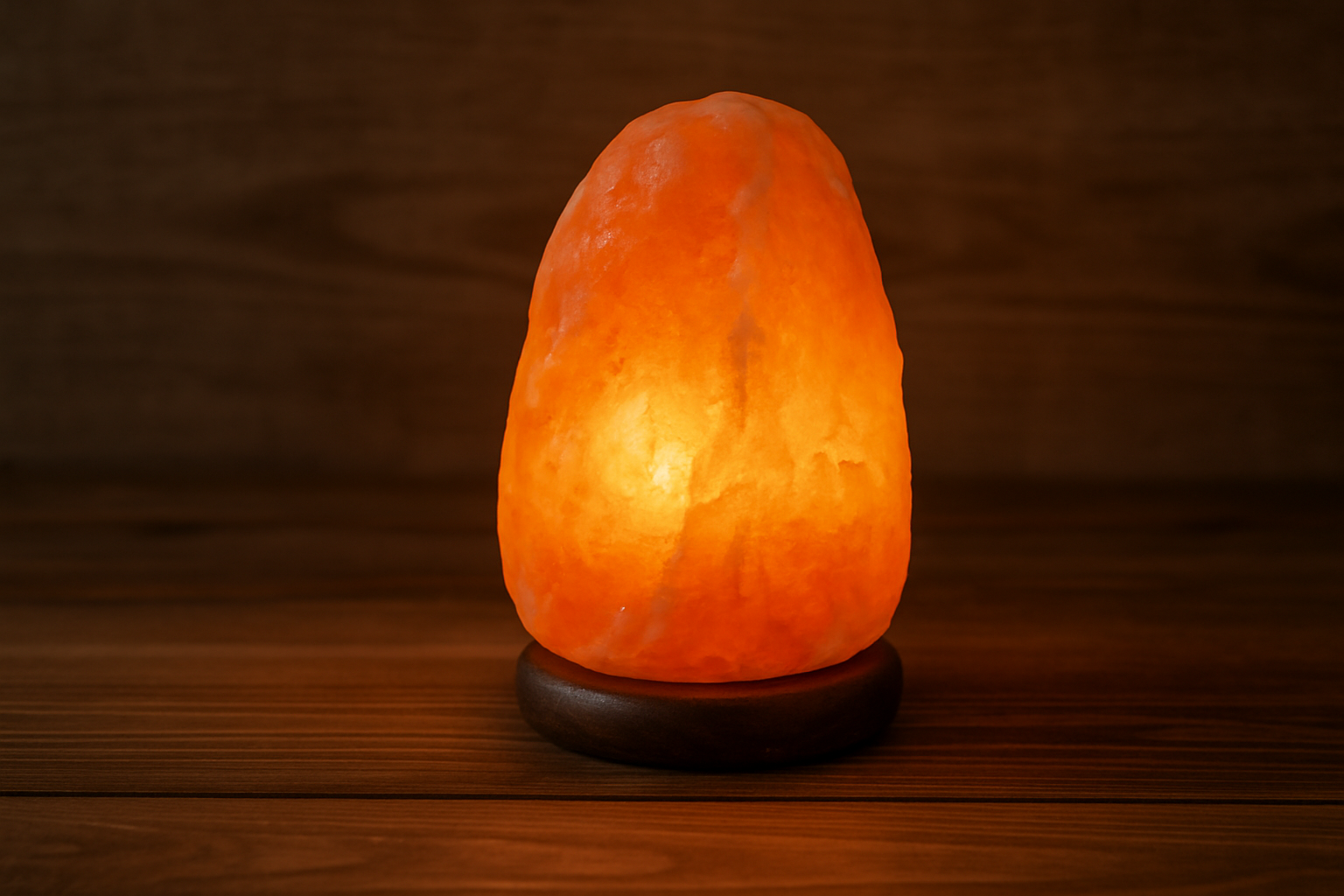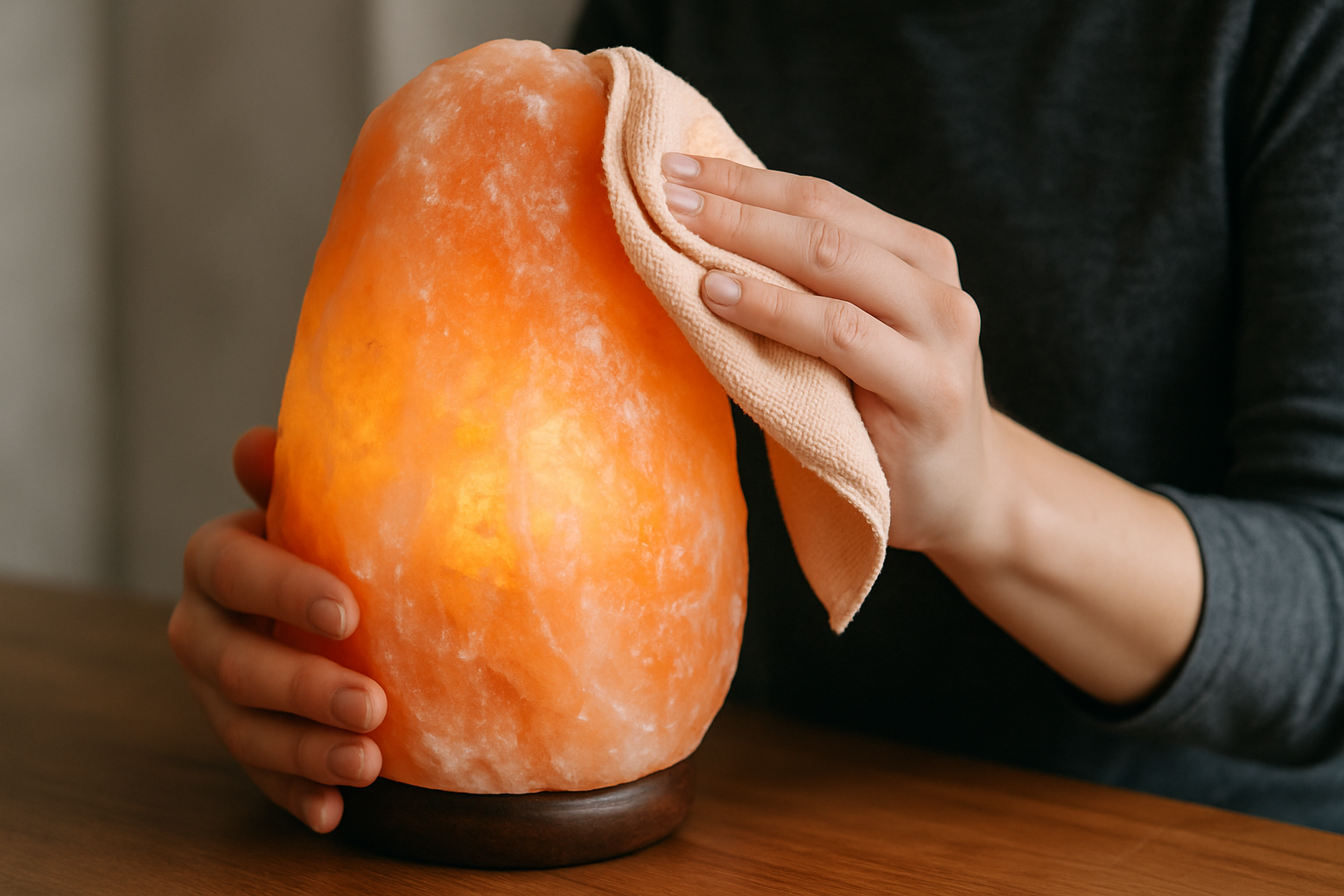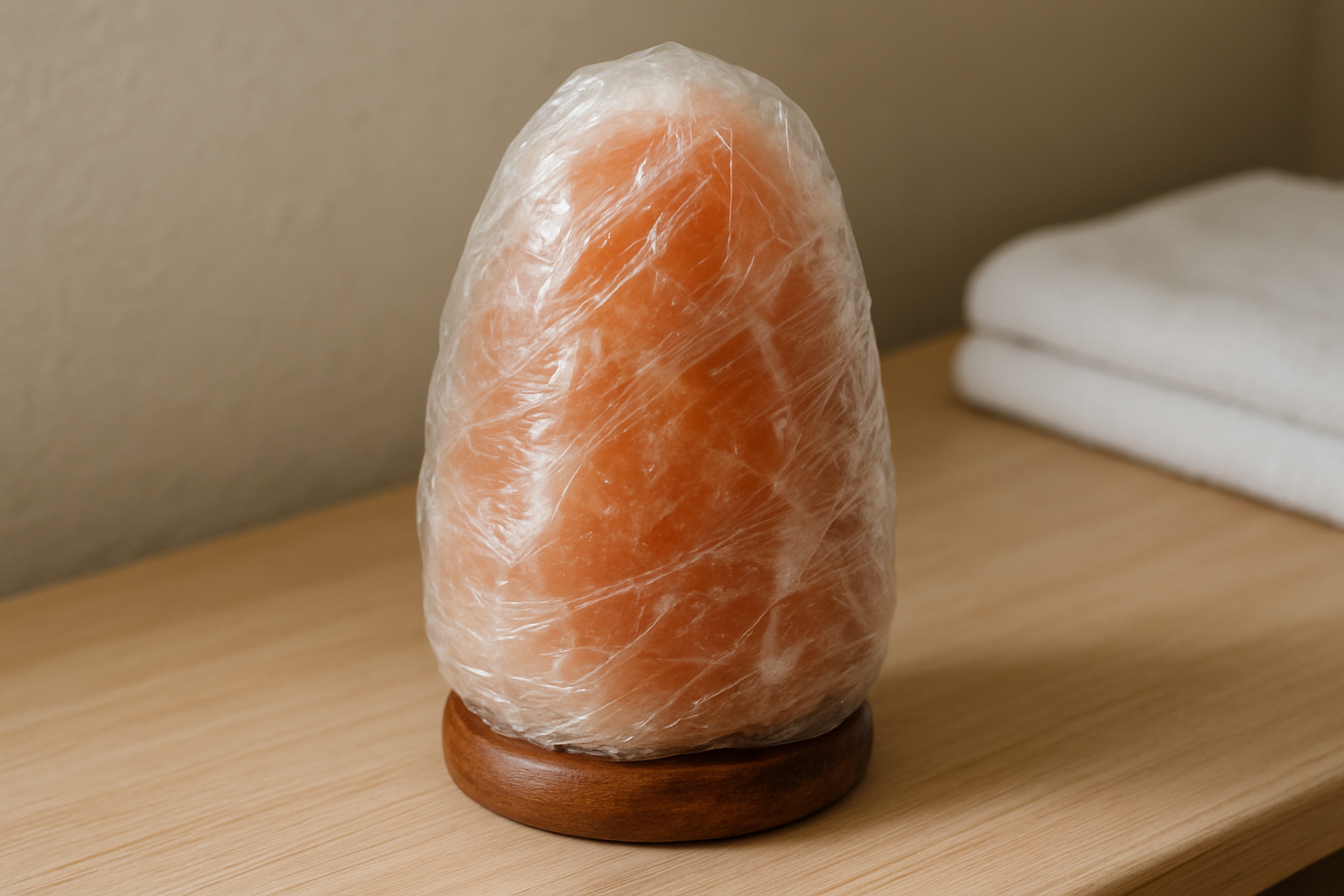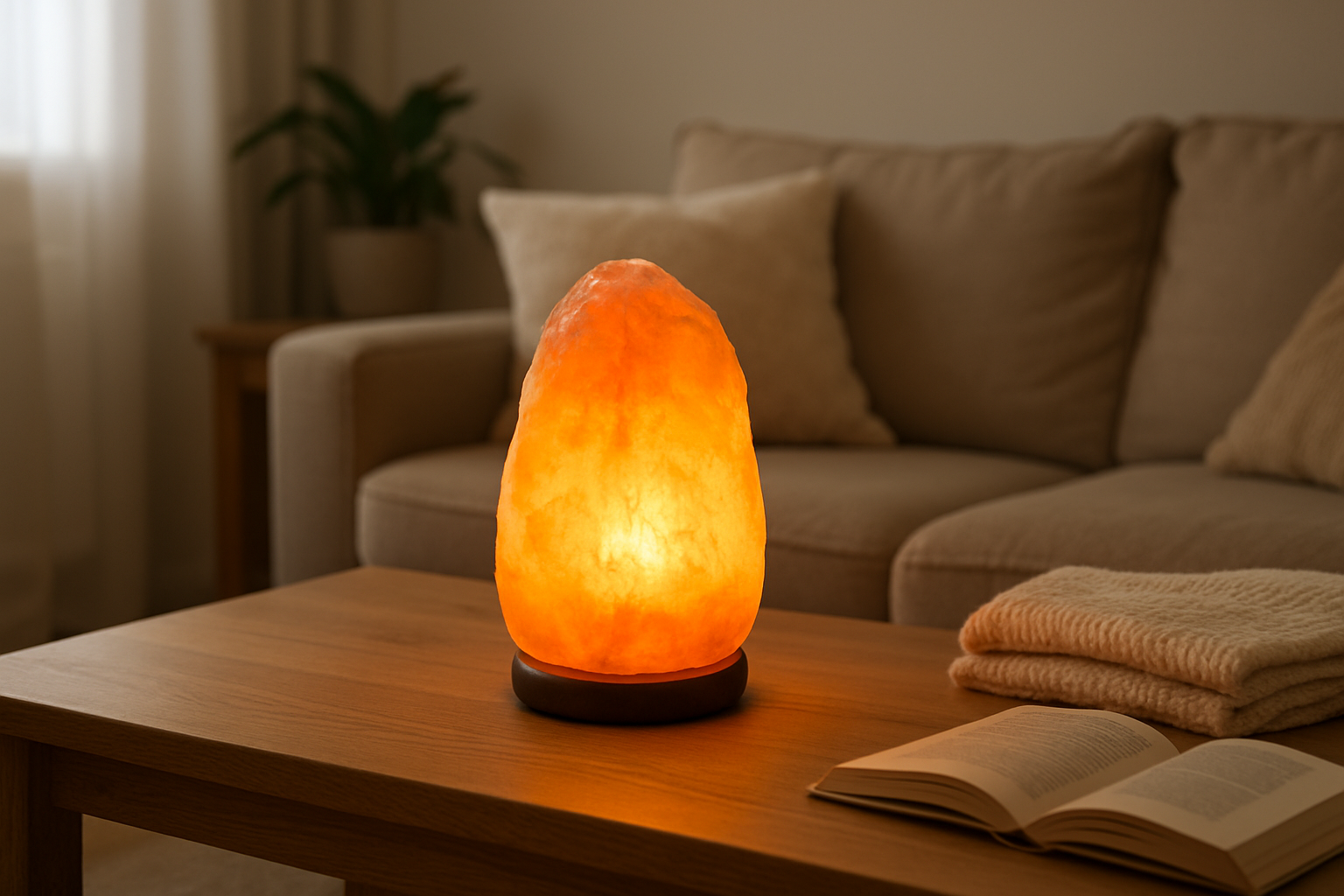Free UK shipping
How to Clean a Himalayan Salt Lamp: The Ultimate Step-by-Step Care Guide
August 21, 2025 7 min read

Himalayan salt lamps are famed for their warm, soothing glow and natural air-purifying properties.
But what exactly is the best way to clean and maintain them?
In this definitive guide, we’ll walk you through everything you need to know about how to clean a Himalayan salt lamp—from quick fixes to long-term care.
Some are worried that moisture ruins these beautiful lamps.
Some are confused about whether to use water or dry methods.
Some wonder how to handle cracks, leaks, or flickering bulbs.
Some want expert tips to keep their lamp shining like new.
Some seek simple steps for daily upkeep and storage advice.
Let's dive right in.
Table of Contents
- Understanding Your Himalayan Salt Lamp
- Why Cleaning Is Essential
- Precautions Before Cleaning
- How to Clean a Himalayan Salt Lamp: Step-by-Step
- Dealing with Leaking or "Crying" Salt Lamps
- Bulb and Cord Maintenance Tips
- How to Store Your Salt Lamp Properly
- Frequently Asked Questions (FAQ)
- What's Your Next Step?
Understanding Your Himalayan Salt Lamp
A Himalayan salt lamp is a chunk of pure Himalayan pink salt, often hollowed out to house a small light bulb inside. When lit, it emits a delicate amber glow, perfect for creating calm and ambiance.
Besides aesthetics, many users believe these lamps can improve air quality by attracting moisture and trapping airborne particles; though scientific consensus is divided, they remain popular wellness accessories around the world.
One key feature to recognize: salt lamps naturally absorb moisture from the air due to their hygroscopic nature. This “moisture magnet” quality can lead to surface dampness or even salt “leaking” if not properly cared for.
Manage your expectations accordingly—while your salt lamp beautifies your space, it also needs some attention to keep it in tip-top shape for years to come.

Why Cleaning Is Essential
Over time, your salt lamp can accumulate dust, dirt, and even water crystals on the surface. This buildup not only dulls the lamp's natural glow but can cause damage if ignored.
Constant moisture exposure can cause the salt to dissolve slightly, leading to an unsightly "melting" effect known as "crying". Trapped dust and grime may interfere with the lamp's hygiene and aesthetics.
Cleaning your lamp regularly complements the natural ambiance and ensures longevity — making it a worthwhile ritual for all Himalayan salt lamp owners.
Regular maintenance also prevents operational problems, like bulb flickering or cord issues, which can arise from neglect or improper care.
Precautions Before Cleaning
Before you reach for water or cleaning supplies, here are some expert do-not tips to keep in mind:
- Do NOT immerse your lamp in water or rinse it under running water. Washing can dissolve the salt’s surface, ruining its texture and appearance.
- Do NOT use harsh chemicals or abrasive cleaners. These can damage the lamp and reduce its lifespan.
- Always unplug your lamp before cleaning. This prevents electric shock and protects the bulb and cord.
- Handle the lamp gently. Sudden movements may dislodge the bulb or damage the internal wiring.
- Avoid placing your lamp in humid areas like bathrooms or kitchens. Excess moisture encourages salt dissolution.
Following these precautions will help you avoid costly damages. For an in-depth understanding of salt lamp dangers and care, check out this comprehensive maintenance guide.
How to Clean a Himalayan Salt Lamp: Step-by-Step
Cleaning your salt lamp is straightforward if you follow the right steps. Here’s a detailed, expert-approved process for how to clean a Himalayan salt lamp safely and effectively:
1. Turn Off and Unplug the Lamp
Safety first! Always unplug the lamp and allow it to cool down before cleaning. This prevents electric shocks and protects the delicate bulb inside.
2. Dust Off with a Dry or Slightly Damp Cloth
Use a soft, dry microfiber or cotton cloth to gently wipe dust off the lamp’s surface. Avoid wet cloths — if necessary, use a barely damp cloth, just enough to catch dust particles.
Wiping softly will clean the surface without dissolving the salt.
3. Use a Soft Brush for Crevices
For rough or uneven surfaces where dust collects, a soft brush (like a makeup brush or small paintbrush) works well to lift debris without scratching.
4. Remove Salt Crystals with a Dry Brush
If your lamp has formed salt crystals from moisture, gently brushing them off helps maintain a smooth finish.
Do not use water to dissolve or wash away crystals.
5. Avoid Using Water or Cleaning Solutions
Never soak or rinse your salt lamp. Even a little water can cause the salt to erode and leave a smooth, mirror-like surface that ruins its natural texture.
Note: Washing a lamp might change its appearance permanently, as noted by experienced salt lamp users discussing on Reddit.
6. Warm the Lamp to Prevent Moisture
Turn the lamp on for at least a few hours during cleaning days. The heat helps evaporate any absorbed moisture, preventing the lamp from "crying" or leaking water.
Consider upgrading your bulb wattage if your lamp often feels cold or humid; a 15-watt bulb suits lamps up to 7kg, while a 25-watt bulb is recommended for larger lamps — heat is crucial for maintenance.
7. Inspect and Replace Bulbs as Needed
Flickering or non-lighting lamps may have burnt-out bulbs or faulty cords. Always use the correct replacement bulbs and cords based on your country’s standards for safety and performance.
Pro tip: Move your lamp slowly and always turn it off before relocating to avoid bulb damage from shocks inside the lamp.

Dealing with Leaking or "Crying" Salt Lamps
Leaking or "crying" lamps secrete water on their surface. This happens when the salt lamp absorbs excess moisture from humid air—it’s a natural process but can be concerning.
Here’s what to do if your lamp is leaking:
- Turn off and unplug the lamp immediately to prevent electrical hazards.
- Remove the cord and bulb carefully from the lamp base.
- Place the lamp and the electrical components separately in direct sunlight for several hours to dry thoroughly.
- Once dry, lightly brush away any salt crystals formed from evaporated water.
- Reassemble and keep the lamp in a low-humidity location thereafter.
If your home environment is moist (bathrooms, kitchens, or humid climates), consider running a dehumidifier or moving the lamp to a drier room.
Preventive care and allowing the lamp to stay warm reduce moisture absorption and surface leaking.
Bulb and Cord Maintenance Tips
Getting the right bulb and cord is vital for the performance and safety of your salt lamp.
Here are some expert recommendations:
- Use a 15-watt bulb for lamps weighing 7kg or less, and 25-watt bulbs for larger lamps (7-25kg). Lamps over 50kg require 40-watt or 60-watt bulbs for sufficient heat.
- Purchase high-quality replacement bulbs designed specifically for salt lamps, which last longer and prevent frequent fuses.
- Check your local standards: Countries like Australia, New Zealand, and the UK commonly use E14 bulb base cords, whereas the US and Canada use E12 bases, which are slightly thinner.
- If your lamp frequently fuses or won’t light even with new bulbs, suspect a faulty cord and replace it promptly to avoid fire hazards.
- Always turn off and unplug the lamp before changing the bulb or handling the cord.
For more detailed information on proper bulb selection and cord replacement, refer to this salt lamp care guide.
How to Store Your Salt Lamp Properly
If you plan to put your Himalayan salt lamp away for more than a week, improper storage can cause damaging moisture build-up and surface erosion.
Follow these storage tips for long-term protection:
- Wrap the lamp tightly in an airtight plastic bag or sealable container to minimize moisture exposure.
- Alternatively, use multiple layers of cling wrap or shopping bags to create a moisture barrier.
- Store in a cool, dry place away from damp basements or humid areas.
- Before storing, ensure the lamp is cleaned and dried thoroughly.
This method prevents salt degradation and maintains your lamp’s natural texture when you’re ready to use it again.

Reset Your Attention With This Quick Question:
Are you giving your salt lamp enough warmth and love to prevent "crying" and keep it glowing?
Frequently Asked Questions (FAQ)
Can I wash my Himalayan salt lamp with water?
No. Washing your salt lamp with water is not recommended as it dissolves the salt’s micro-rough surface texture. Instead, use a dry or slightly damp cloth for cleaning. Washing can permanently change the lamp’s appearance and function, making it smooth and less effective.
Why is my salt lamp leaking water?
Leaking or “crying” occurs when the lamp absorbs moisture from humid air. This water seeps out on the surface and evaporates slowly, producing salt crystals. To fix this, dry your lamp in sunlight and reduce humidity in the room.
How often should I clean my Himalayan salt lamp?
Regular light dusting once every 1-2 weeks should suffice. Deep cleaning is only necessary if the lamp gets noticeably dirty or if salt buildup occurs.
What bulb wattage should I use?
For lamps under 7kg, a 15-watt bulb is ideal. Larger lamps between 7kg and 25kg need 25-watt bulbs. Very large lamps (over 50kg) require 40-watt or 60-watt bulbs to maintain appropriate warmth.
Can I fix a flickering lamp myself?
Yes. Check if the bulb is burnt out or if the cord is faulty. Replace bulbs with the correct wattage and consider replacing cords if flickering persists. Always unplug before servicing your lamp.
What's Your Next Step?
Tell us in the comments: How will you apply this to your Himalayan salt lamp care routine?
For personalized advice or troubleshooting, contact us! We'd love to help your salt lamp shine beautifully for years.
By following this comprehensive guide on how to clean a Himalayan salt lamp, you secure not only the beauty but the safety and longevity of your glowing companion.
Remember, the secret lies in gentle care, the right materials, and understanding your lamp’s nature.

For related home care tips, consider exploring guides on household maintenance such as how to clear hair from drains effectively, keeping your entire space fresh, clean, and comfortable.
